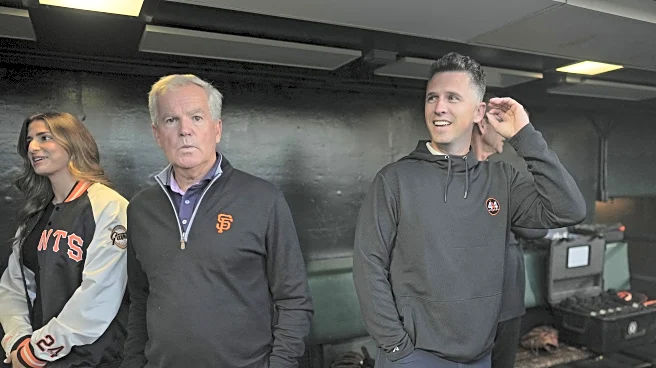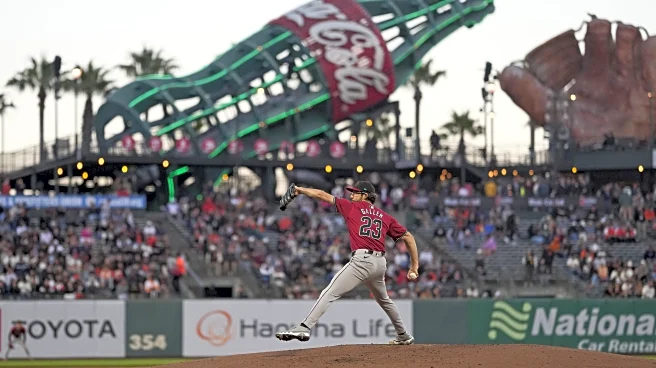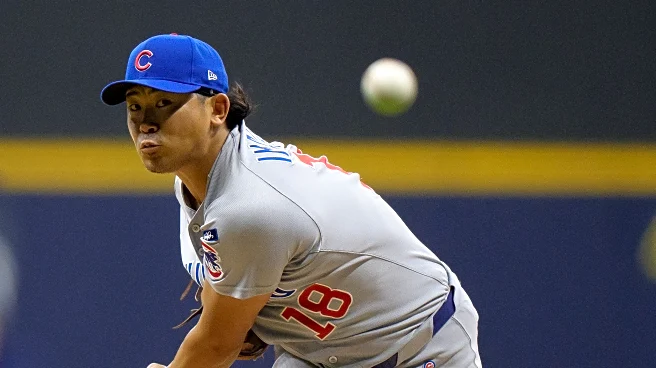Major League Baseball’s General Managers meetings kick off today in Las Vegas and I figured it’s a good time to check in on the team’s payroll situation. My pet project the past few offseasons (2022, 2023,
2024) has been trying to get a sense of the total Baseball Operations budget for our beloved San Francisco Giants, using the MLB payroll as a starting point, in hopes of then getting back to an idea of just how much the Giants can spend on free agents.
Why does this matter? I guess it doesn’t matter at all. At the end of the day, it’s not our money. It’s more fun to dream big. On the other hand, the Giants have been pretty good at clipping the wings of that imagination year after year. I’m compelled to wrap my head around the entire baseball operation to see just how much wiggle room is available. Farhan Zaidi mentioned in 2024 that he had to basically beg, borrow, and steal from every area to make the inflated payroll fit into the baseball ops budget, something to the effect of needing to get Greg Johnson’s approval to use even travel miles points because every cent of the budget had been spent. So, there’s a limit, and I want to know it.
Offseason speculation usually boils down to “Will the Giants spend to the luxury tax?” or “Will the Giants go over the luxury tax?” with the occasional Greg Johnson interview sprinkled in discussing just how big of a payroll the team will run. In Johnson’s San Francisco Standard interview with John Shea a week and a half ago, this section highlighted an important note about expenditures:
The Giants would be subject to a competitive balance tax if they exceed the 2026 tax threshold of $244 million. They’re 10th on the MLB payroll chart, far below the No. 1 Dodgers, as is pretty much any other team. Exceeding $200 million in payroll depends on whether the Giants can land more elite players. […]
“It just depends on what’s out there,” Johnson said of $200 million. “We may be over. We may be under. We’re going to look at each situation and make the decision and see how it fits into not only next year, but the longer-term plans.”
That luxury tax and $200 million disparity is important. There have always been two payrolls to keep track of:
- The Competitive Balance Tax (CBT) payroll
- The “real money” payroll
The CBT is that $244 million threshold. It’s based on the average annual value of a player’s total contract. The “real money” payroll is the actual dollar amount to be paid that season — no averages. And this is what’s being referred to when the notion of the Giants running a $200 million payroll comes up. In the past 10 years, here are all the times the Giants have run a $200+ million *real money* payroll (their CBT payroll in parenthesis, and +/- from first tax threshold):
2018: $209.6 million ($195.7 million, -$1.3MM)
2023: $199.9 million ($218.5 million, -$14.5MM)
2024: $193.9 million ($249.1 million, +$12.1MM )
Now, here’s You’ll note that in none of those seasons have the Giants done anything other than disappoint. So, from an investment standpoint, there’s reason to believe that the team, despite Greg Johnson’s public comments, might be a little gun shy when it comes to spending more on the major league payroll.
Plus, these figures don’t factor in the other mandatory costs that a team has but are critical for understanding how the Giants structure their major league payroll. Their front office page lists 528 people in the organization classified under Baseball Operations who aren’t investors (31 listed) or in the Executive Office (and, if anyone reading this edits or knows someone who edits SFGiants.com, Katia Andon in Live Experience & Entertainment’s title has a typo: “Prouduction Coordinator”?). Not all of these people are paid via baseball revenue or are even employees (probably seasonal workers or independent contractors), and some are part of Mission Rock which I presume pays them, but a decent amount of these people are under Buster Posey’s management — or, at least, a part of the budget he oversees.
There are also the coaches, minor leaguers, facilities maintenance and financing (Papago Park cost $50+ million), travel, and insurance that the Giants have to cover but don’t get factored into Major League Baseball and the players’ union calculations for Collective Bargaining Agreement purposes. And, although these items do not count against the payroll either, they do fall under Baseball Ops:
- Bob Melvin’s $4 million salary for 2026
- Tony Vitello’s $3 million buyout from Tennessee.
- Blake Snell’s $17 million deferred signing bonus.
That’s another $24 million to throw onto the pile, and while none of it counts towards the luxury tax, it absolutely can and will have an impact on what the Giants can do in free agency.
You might’ve seen this chart floating around on social media this season which used publicly available estimates to indicate how organizations spent their money. It gives you a general idea of how the Giants compare to the rest of the sport and provides some more context for Greg Johnson’s infamous “somewhat break even” comment.

So, there are the Giants in the middle of the pack when it comes to percentage of revenue used on the major league payroll. It’s an estimate, of course, because Forbes only uses publicly available data, and I prefer Cot’s MLB Contracts to Sportrac’s estimates because I think it’s better researched (though, more on that in a moment). I mention all this because it’s not exact, it’s just a general sense. The Giants’ CBT payroll in 2025, according to Cot’s, was $218.1 million. We can imagine that revenue was up a bit more since attendance was, too.
Currently, Cot’s has the Giants at $155.4 million in real money commitments for 2026 — $149.5 million if you zero out the salary arbitration estimates (and Cot’s uses MLB Trade Rumors’ projection) for Joey Lucchesi, JT Brubaker, and Andrew Knizner. That’s $51.5 million below a $200 million real money payroll. Their estimated CBT payroll is $182.1 million. That’s $61.9 million below the first luxury tax threshold.
The CBT estimate includes the aforementioned player health care (estimated to be $18 million for 2026) and $1,666,667 million pre-arbitration bonus pool contribution. Cot’s also generates an estimate for 0-to-3 years service time players in the majors and 0-to-3 players in the minors which at year’s end winds up being converted to the actual figures based on all the call-ups and DFAs, etc. For 2026, Cot’s estimates $13,464,000 for their 0-to-3 players in the major leagues and $2,669,800 for their 0-to-3 players in the minors. They are also still paying $1,875,000 of Jorge Soler’s free agent salary, too.
Add those figures to the real money payroll and there’s $187,181,411 already committed for 2026. To give you a sense of what that means: this season, the Giants ended up with a $178.5 million real money payroll given their transactions; and, with the Soler payout, pre-arb bonus pool contribution, and player health care contribution ($17.5 million) the estimated cost of the major league payroll in real money terms was $199.5 million.
That’s why Buster Posey’s season was so impressive. He made a couple of big splashes (Adames, Devers) and kept the payroll in line with expectations. That $6 million saved by trading Taylor Rogers surely helped.
If you add the numbers I just did to the three other times the team ran a $200 million real money payroll, it looks like this:
- 2018: $214.5 million major league budget
- 2023: $212 million major league budget
- 2024: $235.4 million major league budget*
*- except, for all my championing of Cot’s MLB Contracts, they list Blake Snell’s 2024 salary as the full $32 million, even though we know it’s got a $17 million signing bonus. So, the real money the Giants paid for it in 2024 was $15 million. Which means that the Giants’ total major league budget last season was $218.4 million.
In this series, I’ve consistently landed on the conclusion that the Baseball Ops budget is $250 million or thereabouts. That seems like a sensible figure that gives the team just enough to stay competitive while providing solid return on the investment. Having said that, they have $24 million in one-time costs for 2026, and I’m struggling to see how they work around that without eating into their profits.
Unless the non-baseball revenue is a real bonanza.
Add that$24 million to the existing figure for the major league roster and they’ve got $211,181,411 in baseball-related commitments already. I have no idea how much it costs to run an organization or what gets funded by sales & marketing or is subcontracted to other parties, but it has a lot of bearing on what we’re talking about when we talk about the Giants improving through free agency. I think it’d be ignorant of me to discount it or pontificate about the offseason without factoring it in, even if my only concern is about the team getting better and winning ballgames. With apologies to the 31 investors whose money is more important than that.
The Giants have a lot of work to do this offseason and might not have the financial backing to accomplish it all. Based on publicly available data, history suggests that the Giants are approaching their established financial limits long before free agency kicks into gear. Even with new investors this season, I don’t think the payroll is likely to grow very much. Some of their contribution went into Mission Rock, the real estate development that would not have been possible without the public adoration and commitment to the San Francisco Giants brand. They even have the convenient out of Blake Snell’s bonus figure — blame the predecessor for the team’s present circumstances! But the Giants have been too bad for too long and so something’s gotta give.
I only invest my time, of course, but my vote is for the Giants to spend more money on their baseball operation.













